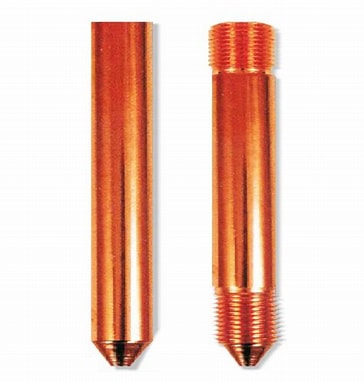


Grain orientation in copper boosts conductivity and durability.
The copper bonded earthing rods are increasingly gaining importance in grounding systems. These rods not only have efficient conductivity but also exhibit resistance against any form of corrosion. Most of the times, the thickness of copper coating and copper bonded process are the major concerns. One of the most unnoticed little factor is the orientation of grain with respect to the copper layer. Although it is microscopic, this single point of change will have a great impact on how the rod does actually acts, in terms of electric conductivity and mechanical strength.
Grain orientation, which means the direction in which the crystalline structure of copper is aligned during the bonding process, has a significant role to play in the electrical performance of the rod. The copper atoms in the material naturally form grain boundaries due to their molecular orientation, which may or may not be in favor of electricity flow through the rod. If the grains are oriented to be aligned with the direction of electrical flow, it minimizes resistance and allows for dispersing electrical faults, lightning strikes, or surges. This means that with properly aligned grains, one can produce an earthing rod with better conductivity, resulting in more efficient ground systems.
At the same time, grain orientation is vital for the mechanical fatigue lifetime of a rod. Copper Bonded Earthing Rod are subjected to various ambient environmental stresses such as soil movements, temperature variations, and mechanical vibrations. If such copper grains were founded more in an orientation supporting those stresses, then it would harm the rod less over time, resulting in fewer fractures or breaks. On the contrary, poor grain alignment may leave behind weak points, increasing the probability of material failure. Therefore, this makes grain orientation one of the major aspects of rod performance over the period, exposed long-term to external environmental and mechanical stresses.
Generally, it is a method of copper bonding by electroplating or molecular bonding or some other way that brings about the orientation of the grains. Advances in the manufacturing process have contributed to better control over grain alignment, which can develop earthing rods that are more conductive and resistant to mechanical wear at the same time. This would mean grounding solutions that last longer with optimal performance even under challenging environments.
On the overall examination, the performance of this Copper Bonded Earthing Rod can be greatly affected by the orientation of grain in the copper coat. Such microscopic structure optimization can help a manufacturer to fabricate a rod that would show better conductivity and would be much stronger with time, resulting in more reliable and efficient grounding systems for many years to come.
